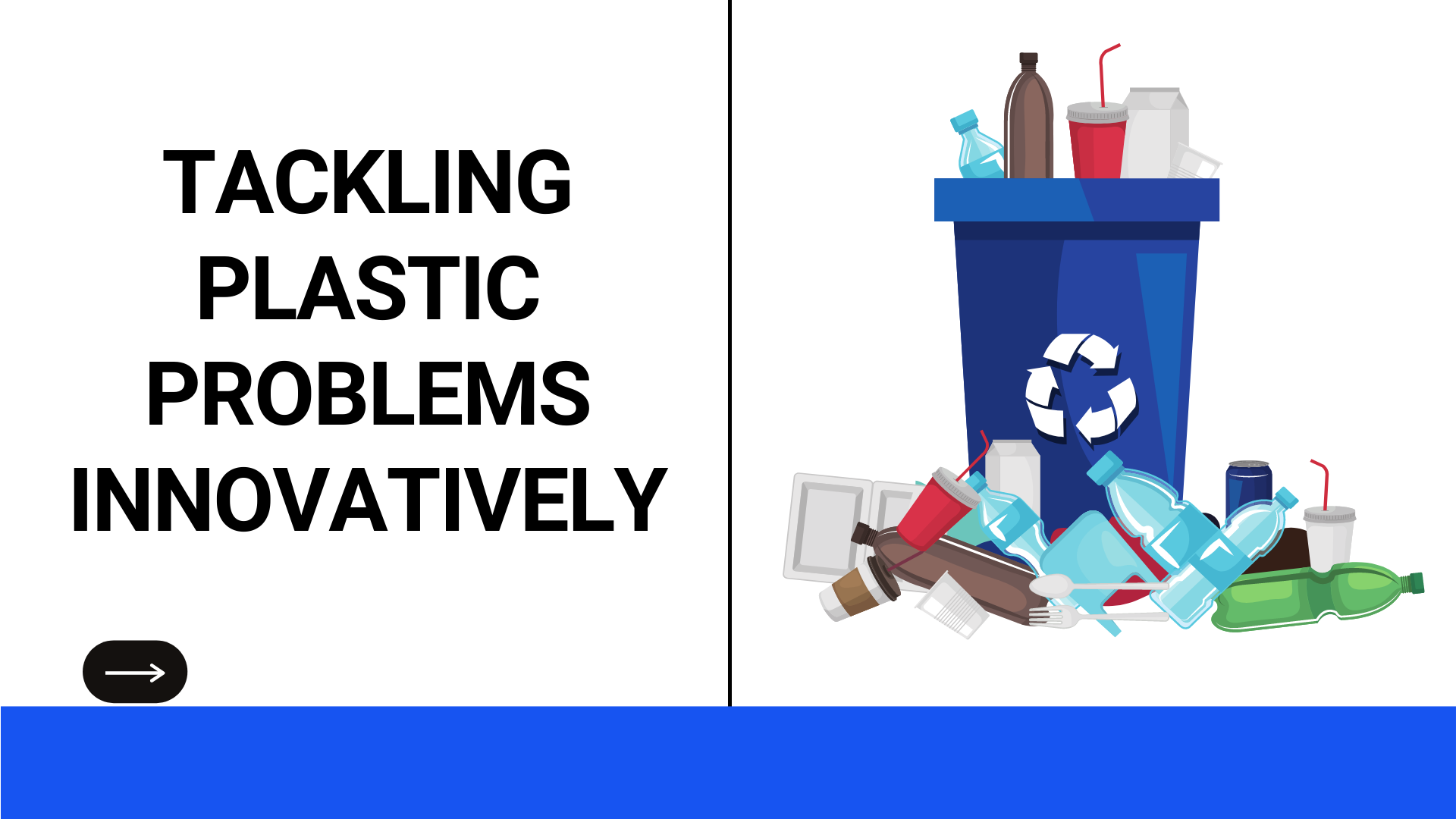1) Eco friendly bricks:
Plastic seems to be accumulating everywhere. To do away with the plastic menace, bricks made out of the waste plastic is an out of the box answer. These eco-friendly bricks have a number of major benefits over traditional bricks, including being thinner and light in weight, having excellent heat insulation properties, and being almost as solid as their equivalents.
Each brick contributes to the reduction of recycled plastic in the world and is produced at a lower cost and with less energy than traditional bricks. It also consumes less resources than recycling plastic into other types.
These bricks do not need the use of glues or adhesives, and the non-toxic manufacturing process emits 95 percent less greenhouse gas emissions than concrete blocks while providing excellent thermal and acoustic insulation.
One disadvantage of these bricks is that they cannot be used in the same way as regular bricks since the plastic squeezes under heavy structures. Their bright spot, though, is that they make excellent wall fillers due to its exceptional sound and thermal insulating properties.
2) Alternatives to plastic straws:
Plastic straws are used extensively in the restaurants all over the world and have become part and parcel of our lives. To combat the plastic straws problem, here are the innovative alternatives:
- Stainless steel can be used for drinking cold drinks. They last a lifetime in only a meagre investment. Innovative steel straws with holders are now piercing the markets.
- Silicone is another alternative to plastic straws which entails durability and flexibility. So if you have sensitivity in your teeth, silicone straw is your savior since they are softer. To add on, they can be used for both cold and hot drinks.
- Bamboo straws are the most sustainable option which can be even composted after they break or wear down. They are eco-friendly in nature and also cost effective.
3) Turn plant residues into plates:
Have you ever thought that agricultural residues can be converted into eco-friendly plates? Well this idea is setting its foot. It’s also an excellent paper alternative. The whole process involves the production of natural fibers subject to a mechanical process. Moreover rice straw can be used to make disposable cups, plates and spoons.
4) Turn recycled plastic into furniture:
Many companies are stepping forward to make furniture using recycled plastic. It’s easy to make and adds a decorative instinct.
5) Bio Collection:
This process can be utilized in breaking down plastics. The only drawback it entails is, it’s very slow yet useful.
6) Convert plastic to fuel:
As more people become mindful of the pervasive environmental damage created by single-use plastics, plastic to fuel campaigns are beginning to gain popularity in the energy sector. Bio fuels can be generated following the process.
The most common uses include generation of heat and power, liquid fuels, and raw chemical materials. Waste plastic is shipped to pyrolysis plants and converted to diesel or gasoline. Pyrolysis can work on a wide range of plastic types.
7) Mushroom that eats plastic:
Pestalotiopsis microspore is a type of mushroom found in the Amazon rainforest. As per the credentials of a research, it has been found out that this mushroom is able to break down plastic into organic matter.
Following this finding, researchers conducted experiments on a variety of other mushroom types to see if a related mechanism occurred, which it did, much to the surprise of the researchers, including oyster mushrooms, which are widely eaten around the world.
More research is currently being conducted to see how these mushrooms can be safely consumed after they have digested the plastic, resulting in a complete circular economy model. While persuading people to consume mushrooms harvested from a landfill site could be difficult!
8) Water bottles that are edible:
The idea that water bottles could be dibble in itself sounds very promising and exciting. Sodium Alginate has been used to make blob-like containers that can be ingested without causing any harm.
So it has the ability to carry water and also be ingested. Isn’t this a brilliant idea? This innovation was first witnessed in the London marathon wherein these small ingestible capsules were handed over to the volunteers who came for race.
9) Bio plastics:
Bio plastics which are also called biodegradable plastics can be broken down into constituents like compost, water and carbon dioxide. Biodegradability simply means that it can be converted into compost at a faster pace and won’t harm the environment. Oxo biodegradable and hydro-biodegradable are the 2 types of the Bio plastics.
10) Coatings that are compostable:
Silicate and biopolymers can be used to develop a coating that renders safe packaging of food. It entails being fully compostable.
Conclusion
We can conclude by saying that though many innovative practices are being adopted, we should still not shy away from saying “no” to the use of plastics. It should be a collaborative effort of all


